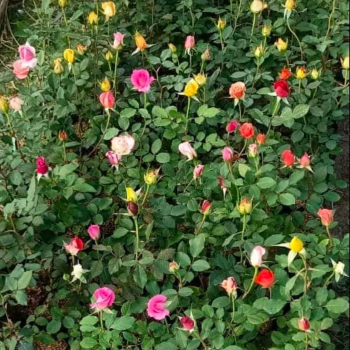In the bustling city of Pune, amidst the cacophony of urban life, Anjali found solace in her small garden. A dedicated horticulturist at heart, Anjali prided herself on her green thumb, nurturing a variety of plants that adorned her modest yet vibrant botanical sanctuary. However, despite her best efforts, there was one plant that eluded her—a rose bush that refused to blossom into its full potential.
Anjali had always dreamt of a garden filled with the intoxicating fragrance and vivid colors of roses. But after several attempts to cultivate roses that were resistant to pests and diseases, she found herself at a crossroads. Each time a new plant was added to her collection, it would thrive for a while, only to succumb to the harsh summer heat or a sudden pest infestation.
One day, while sifting through a gardening forum, Anjali stumbled upon the concept of grafted roses. Intrigued, she delved into research, discovering that grafting involves combining the desirable qualities of two different plants. Typically, a rose cultivar with beautiful blooms is grafted onto a robust rootstock known for its resilience and disease resistance. This union promised the best of both worlds—vibrant flowers and hardy roots.
The major problem Anjali faced was the inability of her roses to withstand the challenging climate and pest issues of her region. This was not just a practical problem but an emotional one too. Her dream of a rose-filled garden had always been within reach yet just out of grasp, leaving her disheartened and questioning her gardening skills.
Determined to give it one last try, Anjali purchased grafted rose plants from a reputable nursery. The transformation was nothing short of magical. The new plants took root quickly, their sturdy rootstocks anchoring them firmly into the soil. As the days passed, Anjali watched in awe as buds formed and, in a burst of color, her garden was finally graced with the roses she had always envisioned.
This was not just a victory for her garden but a personal triumph that filled Anjali with renewed confidence. The grafted roses not only solved the practical problem of cultivation but also rekindled her passion for gardening. The experience taught her that sometimes, the key to solving a problem lies in combining the old with the new, the familiar with the innovative.
Anjali's story is not unique. Across India, many gardening enthusiasts face similar challenges. The climate can be unforgiving, and pests are a perennial problem. Yet, the solution lies in innovation and adaptation. Grafted roses promise a practical solution to these issues, offering plants that are not only beautiful but also resilient.
A case study from Bangalore highlights this further. Rajesh, a landscape architect, faced a similar challenge when designing a rose garden for a client. The client wanted a garden that would bloom year-round without the constant need for intervention. Rajesh turned to grafted roses, which provided the perfect balance of beauty and robustness. The garden was a success, and Rajesh's reputation as a problem-solver in the landscape community was cemented.
For those like Anjali and Rajesh, grafted roses are more than just plants; they represent hope, resilience, and the promise of beauty against all odds. As Anjali's garden continues to flourish, she often finds herself reflecting on the journey that brought her here. Her roses are a testament to the power of innovation and the joy that comes from overcoming life's little challenges.
If you find yourself facing similar gardening woes, consider the transformative power of grafted roses. They might just be the solution you've been searching for, bringing with them not only the promise of beautiful blooms but also the satisfaction of a dream realized.
Visit Vyaparify Site:
https://id.vyaparify.com/green-solutions-nurseryLocation:
https://www.google.com/maps/place/FATEHGARH+CHURIANROAD+OPP+SPRINGDALE+SCHOOL/@31.8644636,74.9559232,17z 
